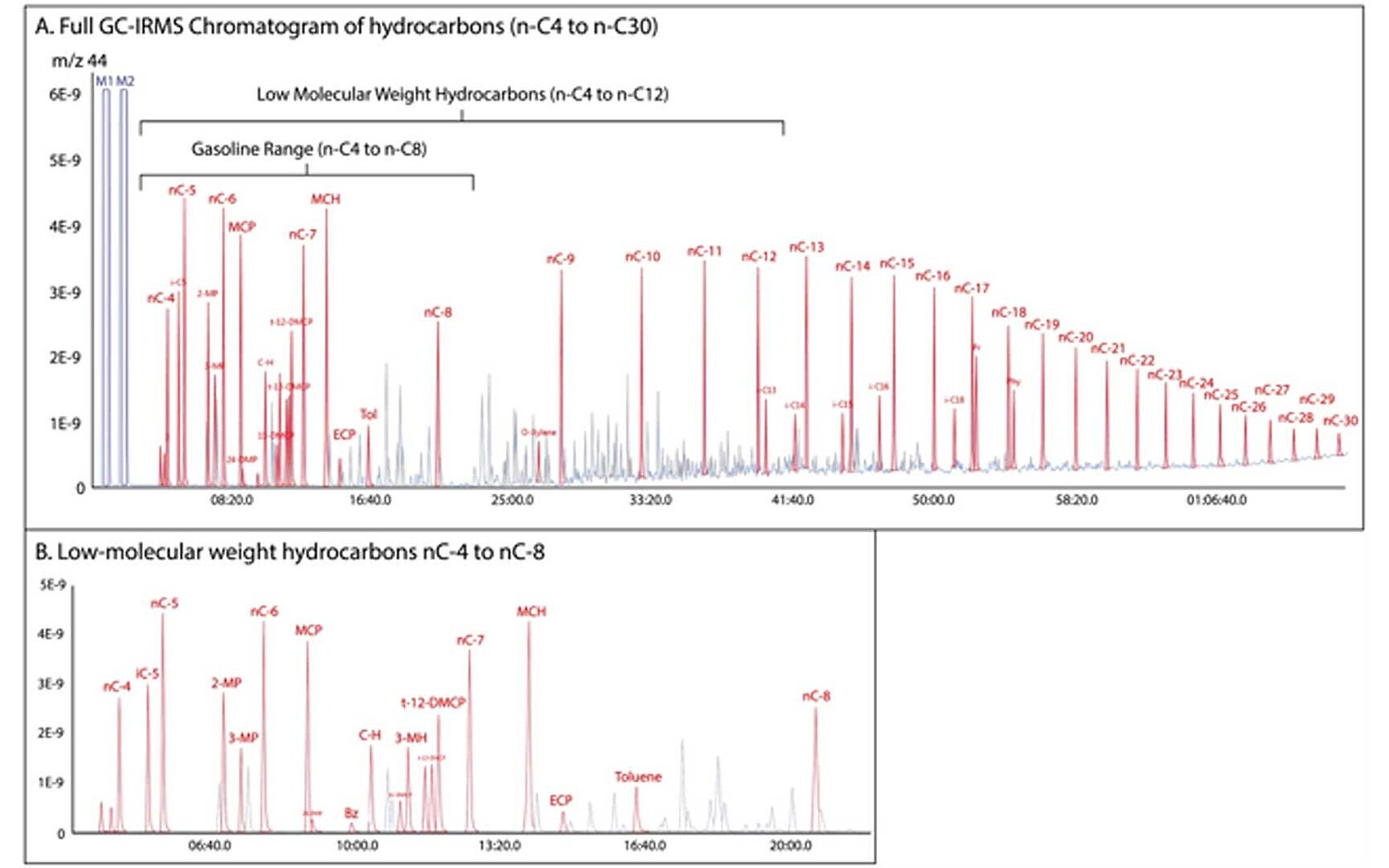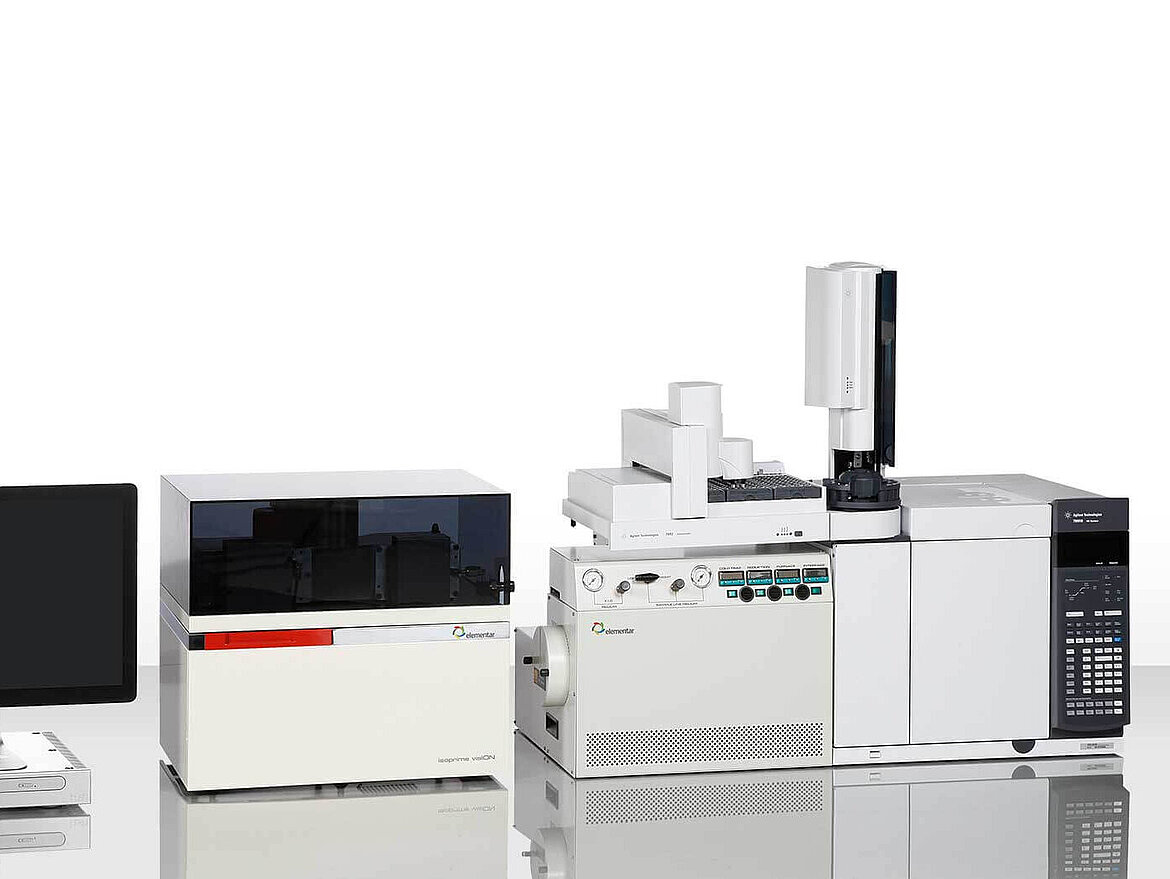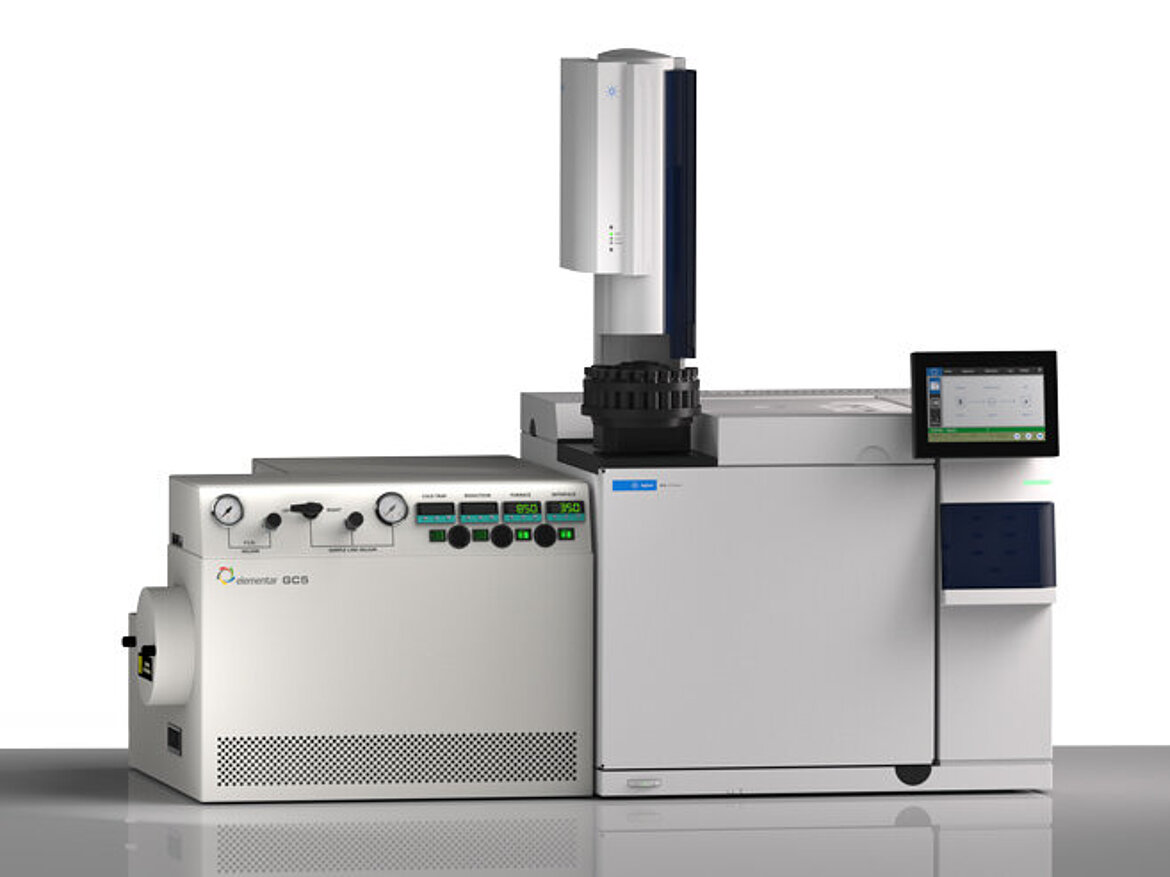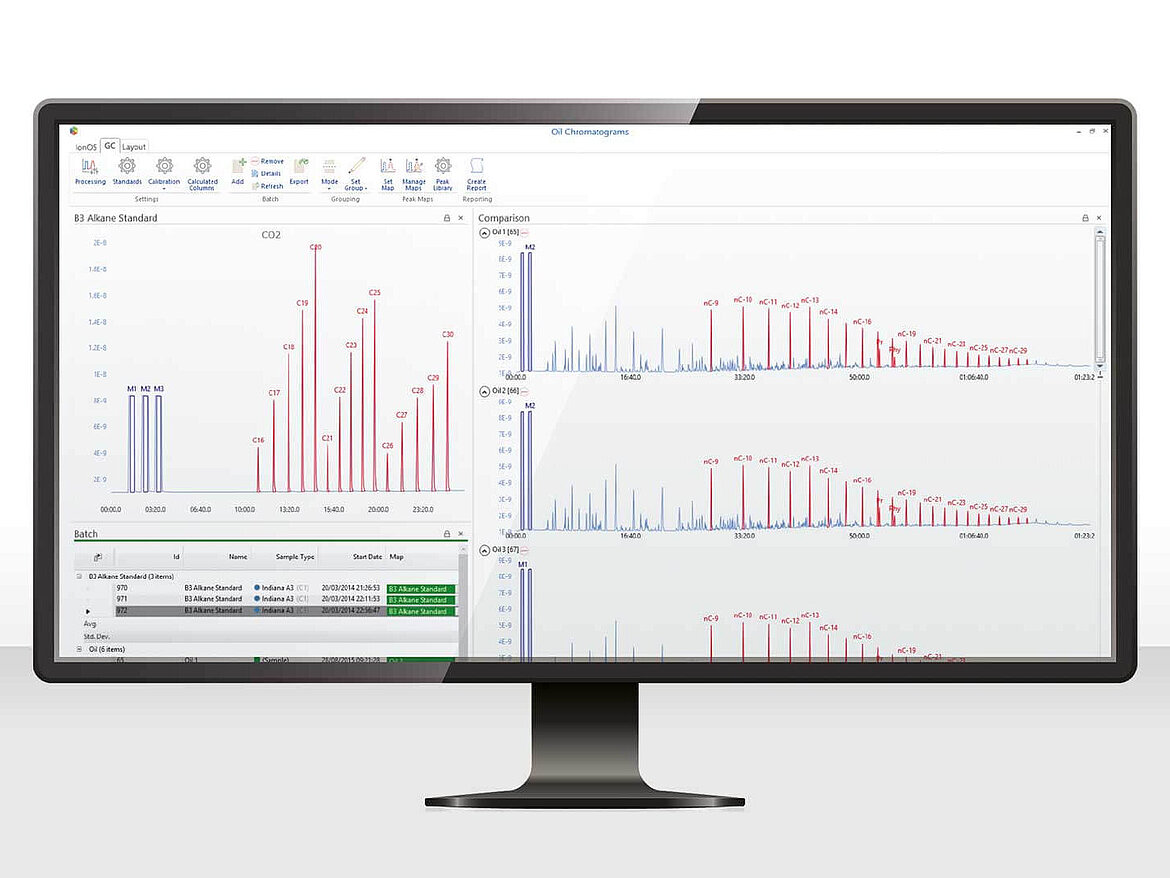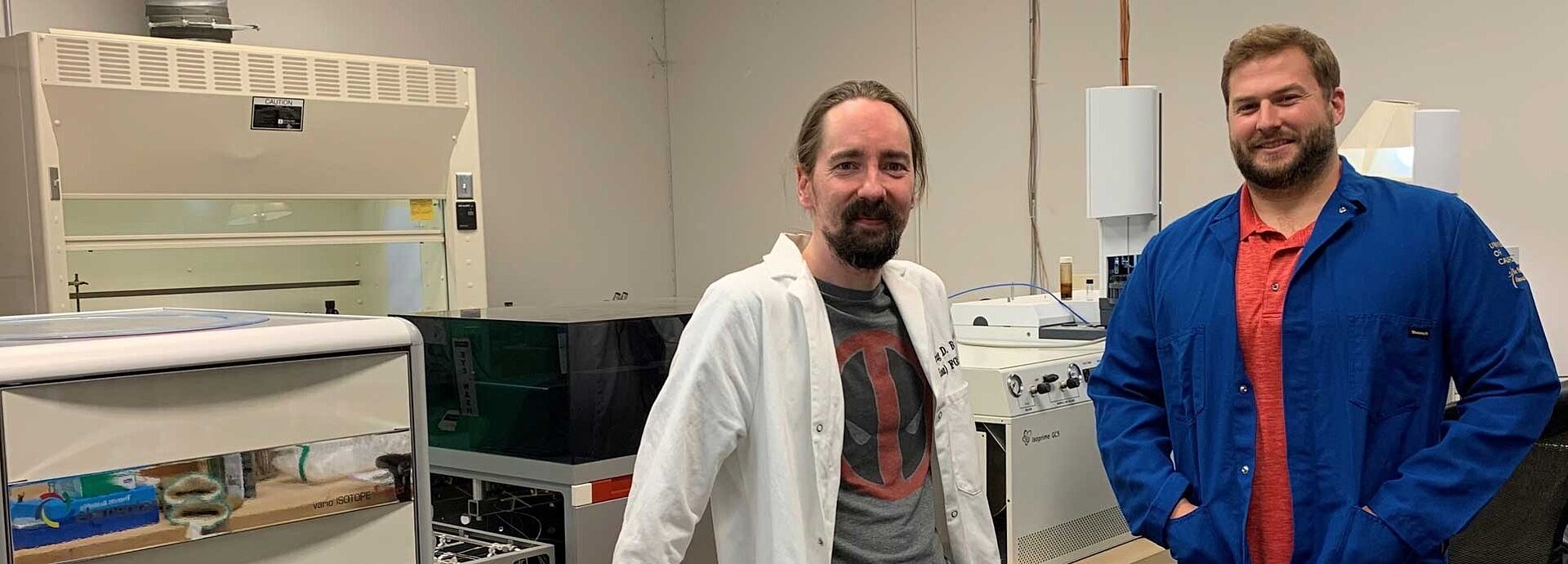Measurement of compound‐specific carbon isotope ratios (δ13C values) via direct injection of whole crude oil samples
Craig D. Barrie1, Kyle W. R. Taylor2 and John Zumberge1
1 GeoMark Research, 9748 Whithorn Dr., Houston, TX 77095, USA 2 Elementar UK Ltd, Earl Road, Cheadle Hulme SK8 6PT, UK
Compound-specific carbon isotope (δ13C) measurements of crude oil compounds is a valuable technique for understanding the origins and history of oil reservoirs and oil-oil and oil-source rock correlations. Traditional methods for δ13C analysis of crude oil involve pre-treatment of the sample to isolate compounds of interest into separate fractions for individual analysis by gas chromatography – isotope ratio mass spectrometry (GC-IRMS). Injection of untreated whole crude oil in laboratories involved in petroleum studies is not standard practice.
Analysis on ‘neat’ crude oil was performed using Elementar’s PetrovisION (an isoprime visION IRMS equipped with a GC5 combustion furnace and Agilent 7890B GC) removing any need for time consuming pre-treatment separation and giving the capability to gather a far more comprehensive and potentially important data set in an efficient single run. Due to no pre-treatment; the whole crude oil sample injections allowed analysis of low molecular weight n-alkanes, cycloalkanes and aromatics that would have been lost via traditional fractionation and isolation methods. These compounds are potentially useful in assessing the origin of crude oils. Measurement of the target compounds was comparable to running isolated n-alkane samples (≤0.4 ‰) taking a fraction of the analytical time.
Samples were processed using Elementar’s ionOS® software (former version of the lyticOS® Software Suite) using the ‘peak mapping’ functionality to designate specific analyte compounds across many peaks within complex chromatograms containing hundreds of peaks. The peak mapping ability instantly identifies the important compounds across multiple injections even with changes in retention time, this enables rapid, automatic batch processing of numerous, complex chromatograms as well as performing automatic multi-point isotope calibration of the entire dataset.
Please find the full paper here: https://doi.org/10.1002/rcm.7496
